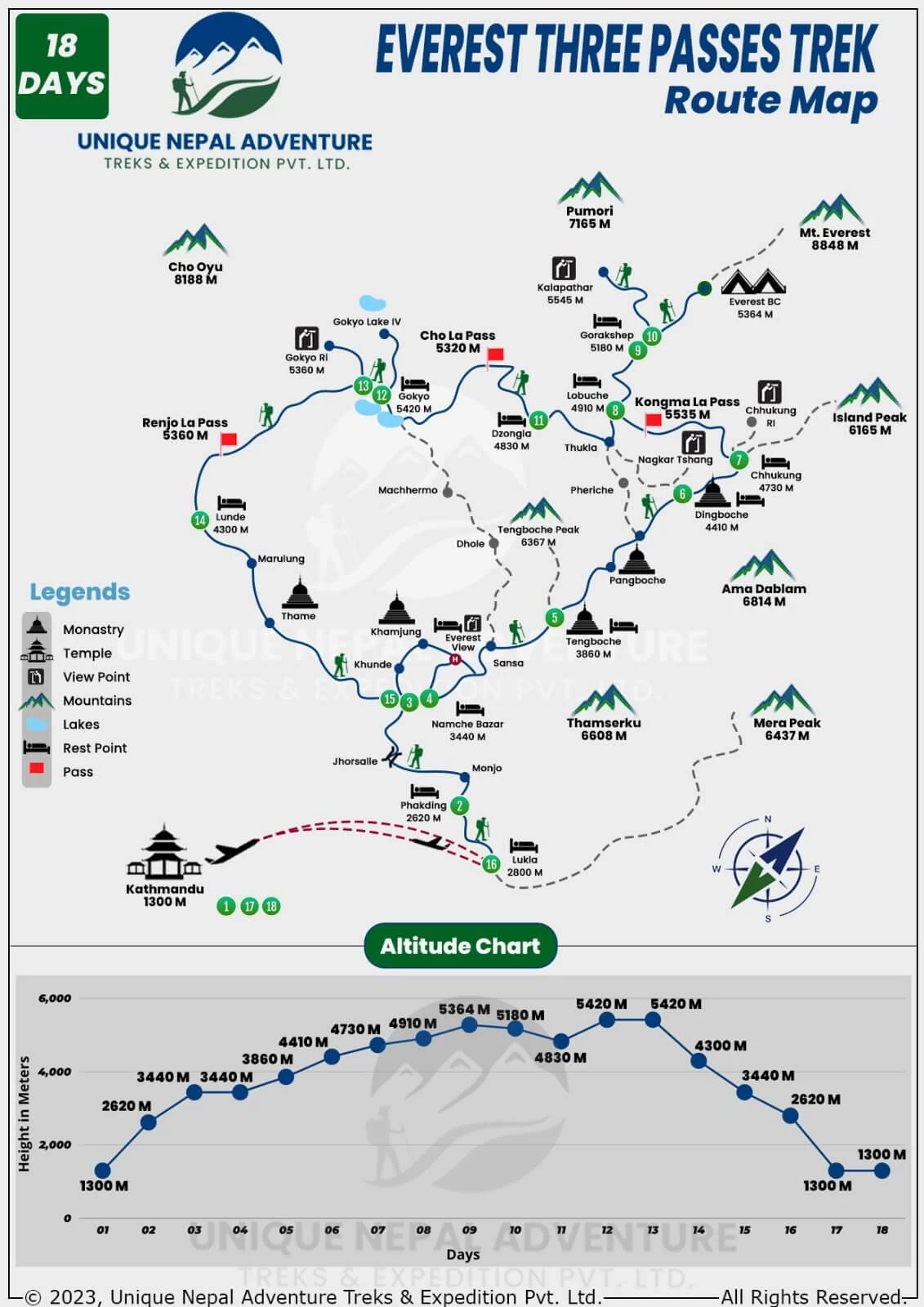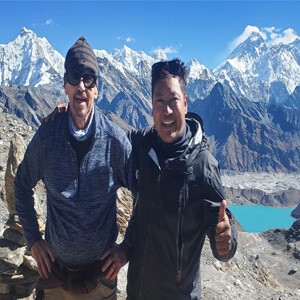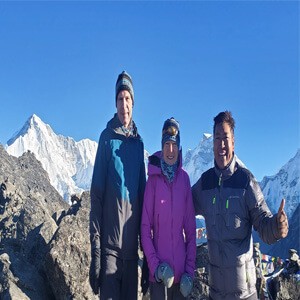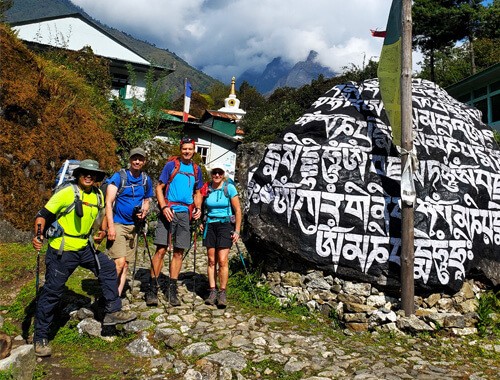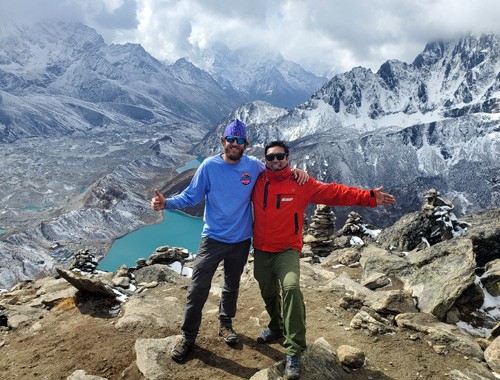Overview of the Everest Three Pass Trek as Adventure High Passes
The Everest Three Pass Trek is designed for physically fit adventure enthusiasts who are comfortable navigating altitudes often exceeding 5000 m. It offers thrilling experiences and breathtaking views from high passes, showcasing the world's highest peaks, including Mt. Everest (8848 m), Lhotse (8516 m), Makalu (8463 m), and Cho Oyu (8201 m). The trek encompasses three key passes: Kongma La (5535 m), Khumbu Glacier leading to Everest Base Camp (5364 m), and Kalapatthar (5545 m) for breathtaking views.
The journey continues onward to the second high pass, Cho La (5420 m), traversing Ngozumpa Glacier, exploring Gokyo Lakes, and ascending Gokyo Ri (5360 m) for the closest views of Mt. Everest and Cho Oyu. Finally, crossing Renjo La (5360 m) offers stunning mountain vistas before descending to Lunden, Thame, and Thamo villages to join in Namche Bazaar.
The 17-days Everest Three Pass Trek offers a thrilling adventure with stunning mountain views. It includes crossing Kongma La, Chola, and Renjo La passes, exploring Everest Base Camp, Kalapatthar viewpoint, Gokyo Lakes, and Gokyo Ri. The trek also involves experiencing Sherpa culture, wildlife sightings, and trekking through Sagarmatha National Park with entry permits required.
The Everest region's full-circle route is a wonderful journey that immerses you in both adventure and cultural exploration. As you trek through challenging terrain, you also delve into the lifestyle, culture, and religion of the Sherpa people, known for their Buddhist heritage and historic monasteries like Tengboche, Namche, and Thame.
Sagarmatha National Park, the backdrop for this adventure, teems with wildlife like Yaks and Jyopcho used for supplying goods and food to Everest Base Camp and Gokyo Valley. The trek offers ample opportunities to spot diverse wildlife such as mountain goats, deer, and birds like Danfe and Munal. Amidst this, the trek presents breathtaking views of crystal-clear white mountains, with encounters with the massive Khumbu and Ngozumpa Glaciers adding to the adventure.
Route of the Everest Three Pass Trek
The Everest Three Pass Trek starts with a flight from Kathmandu to Lukla, offering stunning Himalayan views. You'll walk along the Dudh Koshi riverside to Phakding on the same day. The next day, you reach the Sagarmatha National Park entrance at Monjo village, where you get an entry permit. After lunch and crossing suspension bridges, you ascend Namche Hill.
Namche Bazaar, the Capital of the Everest region trek. It has trekking shops, a bakery café, a pub, and an ATM. Rest here for altitude adjustment and visit nearby spots like Everest View Hotel or Khumjung Khunde village. Return to Namche to enjoy local amenities before continuing your trek.
The area is rich in Buddhist heritage with monasteries, mani walls, stupas, prayer flags, and tsortens. Reach Tengboche Monastery (3860 m) for breathtaking views of Mt. Amadablam and other peaks.
Trekking continues to Pangboche and Dingboche (4400 m), taking an extra day in Dingboche for acclimatization if needed. Consider a day trip to Nagarshyang Hill (5000 m) for altitude adjustment. But, a 17-day Everest Three Pass Trek does not put an extra day here because Dingboche to Chhukung is (3 to 4 hrs.) walking. You can hike to Chhukung Ri Hill to acclimate.
Information about the Three High Passes of Kongma La, Chola, and Renjo La
Kongma La Pass (5535 m/18160 ft): First High Pass
Kongma La Pass is the first and most challenging pass on the Everest Three Pass trek, standing at 5535 m. The journey is lengthy, with no tea houses between Chhukung and Lobuche. Initially, you'll enjoy a smooth ascent for a couple of hours, followed by a more demanding climb for another couple of hours. Near the top, you'll encounter a stunning blue lake that exudes positive energy, momentarily easing any fatigue.
The panoramic views of Nuptse, Lhotse, Ama Dablam, and other majestic mountains will leave you in awe. Descending from this adventurous pass requires careful navigation, as the terrain is steep and prone to falling stones and possible icy patches.
Your guide will ensure you have a packed lunch and carry dry snacks like nuts and chocolate bars, which are quite helpful. After conquering the pass, you'll cross the vast Khumbu Glacier, eventually reaching the safety of Lobuche. The entire journey typically takes around 7-8 hours, depending on your pace. Once in Lobuche, you can treat yourself to warm soup, delicious meals, and a cozy stay at a comfortable lodge.
Visit to Everest Base Camp (5364m) and Thrilling Viewpoint of Kalapatthar (5545m)
After successfully crossing the first pass, you'll venture to the renowned Everest Base Camp (5364 m), the highest base camp globally, and then ascend to the exhilarating viewpoint of Kalapatthar (5545 m). The base camp is a relatively easy 2-hour trek from Gorakshep camp, requiring minimal ascending and offering straightforward accessibility.
Kalapatthar, on the other hand, presents a challenge, taking nearly 2 hours to ascend to its viewpoint at 5545 meters. The reward is extraordinary; you'll witness a breathtakingly close view of Mt. Everest towering at 8848 meters, along with stunning vistas of other peaks like Lhotse, Nuptse, Ama Dablam, and Pumori. It's an experience that's nothing short of incredible!
Chola Pass (5420 m/17783 ft): Second High Pass
After completely visiting Chukung Valley, Kongma La Pass, and Everest Base Camp, Kalapatthar began his journey towards the second high pass of Chola (5420 m). It is such a wonderful pass. You will sleep at Dzong La at around 4830 m. You must ascend (590 m); it takes an average of 3 hours ascending and almost 4 hours downhill to reach Thagna. Take a quick lunch, cross the Ngozumpa glacier for one hour, then stay at Gokyo Valley. It is also a long pass, but you will easily arrive at the beautiful camp in Gokyo. Stay at a lovely lodge.
Explore Gokyo Lakes and Gokyo Ri Top (5360 m/17585 ft.)
Gokyo Valley has five lakes: the first is tiny and nice, the second is quite big on the way, and the third is tremendous and beautiful, which is in front of the lodges. You will see it from your room’s window. You will face it often, and it is so wonderful. The 4th and 5th lakes are situated an hour away from the lodge.
Gokyo Ri stands at 5360 m. It also takes a couple of hours to ascend. It is similar to Kalapatthar's open viewpoint of 360 degrees. You will see a huge part of Mt. Everest (8848 m), the closest view of Cho Oyu (8201 m), Cholatse, and a huge part of the Ngozumpa glacier and Gokyo lakes. It is such a mesmerizing view.
Renjo La Pass (5360 m/17585 ft) - Third and Last Pass
The Renjo La Pass is the third and final pass of the Everest Three Pass Trek, offering an easy and spectacular viewing experience. You must ascend for approximately three hours to reach the top, followed by a four-hour descent. At the summit of Renjo La, you'll enjoy breathtaking views of numerous snow-capped peaks such as Mt. Everest, Lhotse, Makalu, and Cho Oyu, as well as the trembling Gokyo Lake and Ngozumpa Glacier, all visible repeatedly from this vantage point.
After crossing the Renjo La Pass during the trek, you'll descend into beautiful landscapes, passing by a small pond and enjoying various mountain views along the way. The trail to Lunden is well-defined and easy to navigate, making for a pleasant and straightforward journey.
Trail Heading Towards Thame and Thamo Valley, then Joining at Namche Bazaar
After crossing the Renjo La Pass during the trek, you'll experience a sense of relief, easy breathing, and gradual descents. You'll pass through the Thame and Thamo villages, reaching Namche Bazaar quickly. From there, you'll head to Lukla and fly back to Kathmandu. Although challenging, the adventure is immensely enjoyable. Completing the trip will fill you with pride.
The managing director of Unique Nepal Adventure provides a wealth of information before your booking. If you trust us and confirm your booking, our team leader, a professional, well-trained, and fluent English-speaking trekking guide, will offer excellent services. Each evening after dinner, he'll brief you on the next day's program and provide relevant information. They're invaluable in managing altitude sickness, offering suggestions, and providing medicines. Our porters are strong and fit for carrying loads in high altitudes, typically around 20 kg allowed to carry. We work as a team to ensure our clients have safe, successful, and delightful trips with excellent services.
Cost of the Everest Three Pass Trek
A 17-day Everest Three Pass Trek is $1375 per person, which is a full board package but excludes a Hotel in Kathmandu. Option, full board package and including Kathmandu hotel cost is $1425 per person. A group of pax should have a minimum of two people. If you are a single visitor cost may be slightly higher. We customize prices based on your group size, so feel free to inquire.
How about lodging food on the Everest Three-Pass Trek?
Every camp has well-managed lodges and neat, clean, comfortable rooms in the Everest Three Pass Trek. They provide organic and hygienic meals with warm hospitality.
How about transportation to get to the Everest Three-Pass Trek?
Easy access is by flight from Kathmandu to Lukla is just 35 minutes, and returning is also the same. There is off-road, long driving; you need an extra 2 days to arrive at Lukla. I highly recommend taking a flight. We arranged it nicely.
Lifestyle and Culture, Customs, and Religion in the Everest Region
The majority of the population in the area is Sherpas, with a few belonging to the Rai and Tamang ethnic groups. Sherpa people have distinct traditions, customs, language, attire, and festivals. They practice Buddhism and are deeply religious, with numerous Buddhist monuments such as monasteries, Mani walls, chortens, prayer wheels, stupas, and more. Their culture is incredibly rich, and they show great respect to one another with polite gestures.
What mountain views can we see from the Everest Three Passes Trek?
You will see these eye-catching attractions and incredible mountain views from the Everest Three Pass Trek.
- Mt. Everest (8848 m/29029 ft)
- Mt. Lhotse 8516 m (27940 27940 ft)
- Mt. Makalu (8463 m/27765 ft).
- Cho Oyu 8201 m/26907 ft
- Mt. Amadablam (6812 m/22350 ft)
- Peak-38 (7590 m/24902 ft)
- Mt. Pumori (7161 m/23495 ft)
- Mt. Nupse 7861 (25790 25790 ft.)
- Mt Thamserku (6608 m, 2168 ft)
- Island Peak: (6160 m/20210 ft)
- Taboche Peak (6495 m/21310 ft)
- Lobuche Peak (6119 m/20075 ft)
Wildlife, Flora, and Fauna in the Everest Three-Pass Trek
The Everest region is situated within Sagarmatha National Park, which is dedicated to preserving wildlife. Along the way, you may encounter various animals such as yaks, Himalayan Thar, Blue Sheep, deer, musk deer, monkeys, red pandas, snow leopards, wild boars, bears, and a diverse array of birds, including the national birds such as Danfe, Munal, Lophophores, Kalij, and more.
Rivers, Lakes, and Glaciers in the Everest Three-Pass Trek
The majority of the trekking route in the Everest region follows the Dudh Koshi Riverside. This river flows along the Khumbu Glacier and the Ngozumpa Glacier. Along the way, you'll encounter several lakes, including Imjatse Lake and the Gokyo Lakes, as well as two massive glaciers, the Khumbu Glacier and the Ngozumpa Glacier. Walking alongside these glacier lakes is an incredible experience.
Do We Need to Issue Entry Permits for the Everest Three-Pass Trek?
Yes, permits are required for trekking in the Everest region. Upon entering Sagarmatha National Park, which begins when you land in Lukla, there are checkpoints where permits are checked. Without the necessary permits, access to the Everest region or Sagarmatha National Park is not permitted. The required permits include:
- Sagarmatha National Park Entry Permit Rs. 3,000/-
- Khumbu Pasang Lhamu Rural Municipality Entrance Permit Rs. 3,000/-
- TIMS (Trekking Information Management System) Rs. 2,000/-
We can assist in issuing these permits for you. We need your passport photocopy and a passport-size photo, which we will use to obtain the permits. Our guide will carry the permits during the trek and handle any checkpoint requirements. At the end of the trek, you'll receive a souvenir as a token of completion.
Best Time to Visit the Everest Three-Pass Trek?
The best times to embark on the Everest Three Pass Trek are during autumn (September, October, November, and late December) and spring (March, April, and May). During these months, the weather will be clear, with pleasant temperatures, excellent visibility, and stunning, crystal-clear mountain views.
While the winter and monsoon seasons are viable for trekking, they do come with certain considerations. In winter (late December, January, and February), expect snowfall and extremely cold temperatures. The monsoon season (June, July, and August) brings frequent rainfall, cloudy conditions, and reduced visibility. However, if you prefer trekking during these times, it's still possible, and we'll ensure your trip is safe and successful.
- Autumn Season: September, October, November, and December
- Winter Season: late December, January, and February
- Spring Season: March, April, and May
- Monsoon Season: June, July, and August
Why Book With Us?
At Unique Nepal Adventure (UNA), we specialize in meaningful, safe, and personal trekking experiences.
- Fast & Friendly Communication: Quick replies on WhatsApp, email, or your preferred platform.
- Safety First: Our priorities are safety, comfort, success, and satisfaction.
- Expert Guides: Government-certified, friendly, and trained in high-altitude care.
- Strong Porters: Reliable, respectful, and committed to your journey.
- No Hidden Costs: Transparent pricing, always.
- Custom Itineraries: Customizable itineraries according to your requirements and time.
- Excellent Service and Delightful Trip: We provide top-notch services and make unforgettable memories.

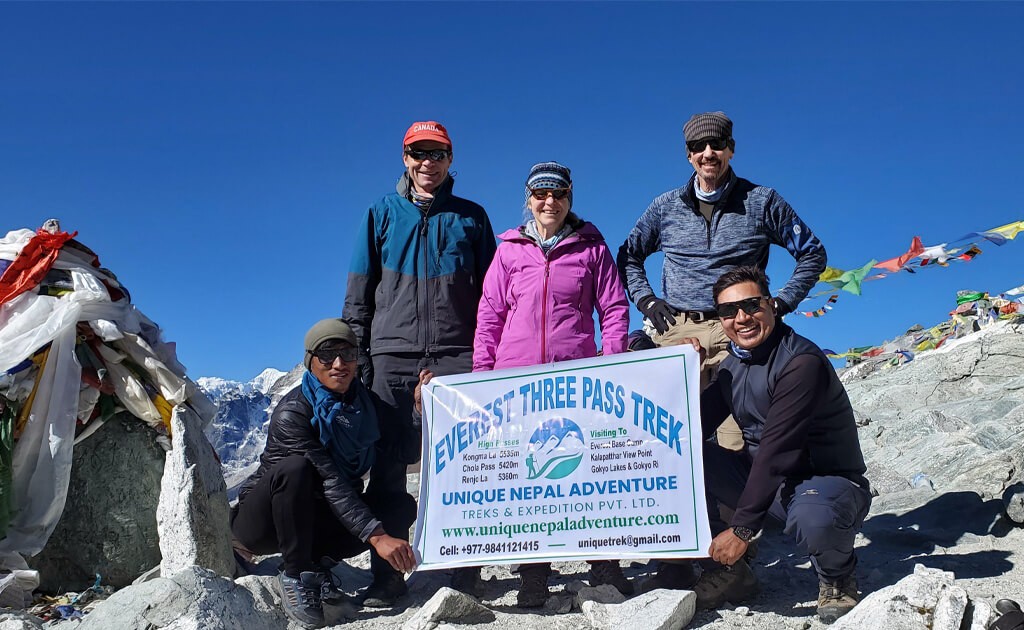
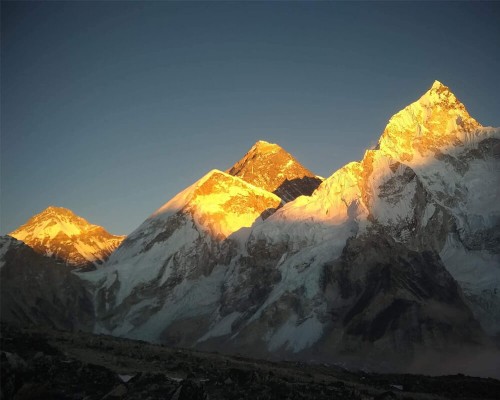
.jpg)
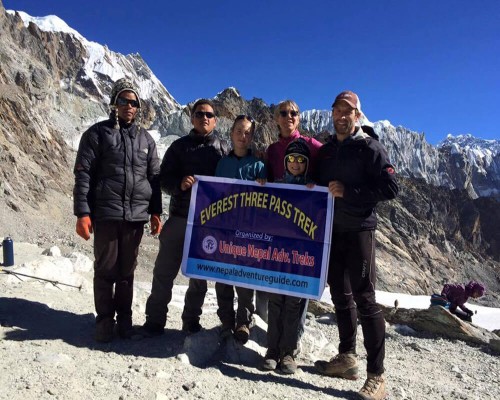
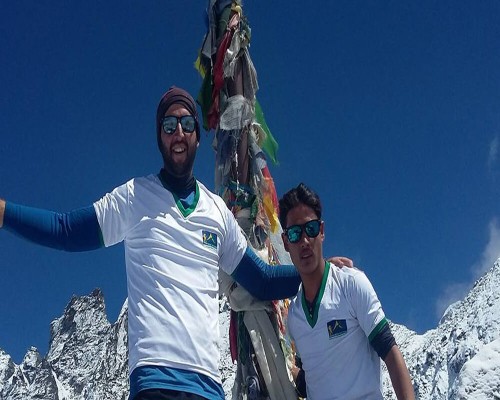

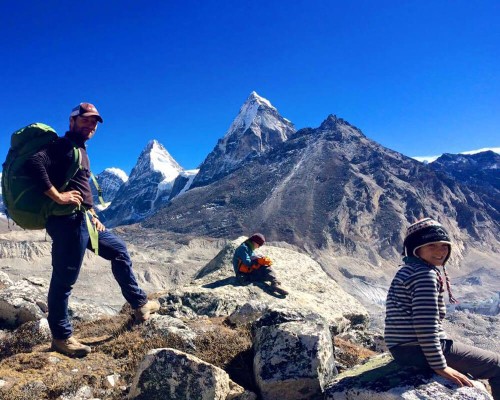
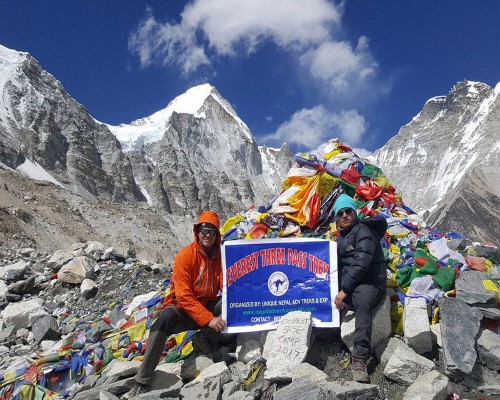
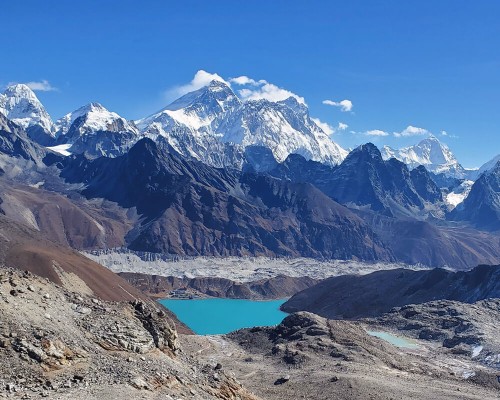


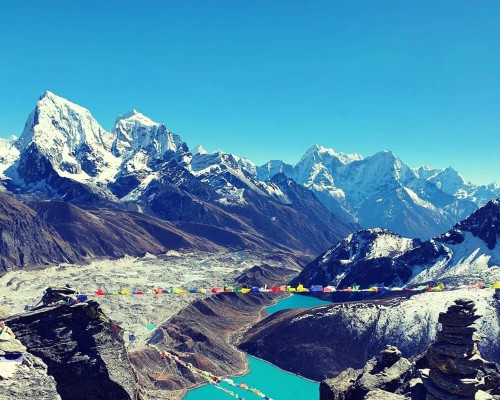
.jpg)
.jpg)
